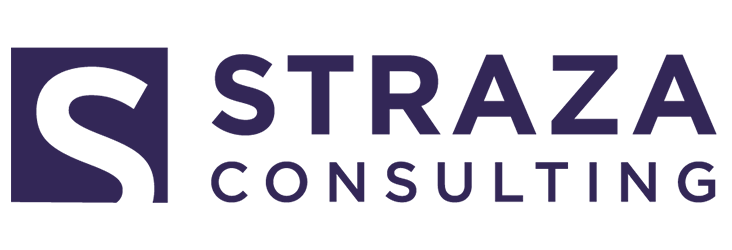
11 Sep CEOs: Is Technology a Threat to Your Business Operations?
CEOs: Have you ever thought of technology as a “threat” to your business operations?
In last week’s post, I shared some of the BENEFITS tech affords CEOs, CIOs, CTOs, and COOs. Just as yin must have a yang (and vice versa), tech also presents some challenges. Here are just a few that come to mind.
6 Challenges CEOs Need to Address
1) Cybersecurity Risks
Cybersecurity risks are a growing concern for CEOs as the reliance on digital platforms expands. The greater the dependence on digital systems and online operations, the more exposed a company becomes to potential threats like data breaches, ransomware attacks, and phishing scams.
Not only can these attacks result in substantial financial losses through fines, ransoms, or operational downtime, but they can also severely damage a company’s reputation, shaking customer trust and investor confidence. Moreover, regulatory frameworks around cybersecurity are becoming increasingly stringent, adding another layer of complexity and risk for companies that don’t adequately protect their digital assets.
As cyber threats continue to evolve in complexity and scale, CEOs must prioritize investment in robust cybersecurity measures that go beyond mere compliance to proactively safeguard the organization.
2) Data Privacy
Data privacy has become an increasingly important consideration for companies as they collect, store, and analyze large volumes of personal and sensitive data. Beyond the immediate risk of data breaches, companies must navigate a complex and ever-changing landscape of privacy regulations, such as the General Data Protection Regulation (GDPR) in Europe or the California Consumer Privacy Act (CCPA) in the United States.
Non-compliance with these laws can result in hefty fines and legal repercussions. Mishandling of customer data can have long-term reputational costs, eroding trust and potentially leading to a loss of customer loyalty. As consumers become more aware and concerned about how their data is being used, companies that prioritize data privacy not only mitigate risks but also can turn this into a competitive advantage by building stronger relationships built on trust and transparency.
Therefore, CEOs must consider data privacy as a critical component in both their risk management and customer engagement strategies.
3) Technology Adoption Costs
This refers to the financial investment required to implement new digital systems, software, or other technological upgrades within a company. These costs can be significant and include not just the price of the technology itself, but also associated expenses like training, system integration, and ongoing maintenance.
The high upfront costs can pose a barrier for many companies, particularly small and medium-sized enterprises, which may struggle to secure the necessary capital. There’s always a risk that the return on investment (ROI) may not meet initial projections, especially if the technology fails to deliver on its promises or becomes quickly outdated.
Given the rapid pace of technological change, CEOs must also factor in potential obsolescence, ensuring that today’s investment won’t become tomorrow’s financial burden. Therefore, making informed decisions about technology adoption involves not only evaluating its potential to enhance efficiency or drive innovation but also carefully considering the financial viability and long-term sustainability of these investments.
4) Skill Gap
Skill gap reflects the disparity between the skills that a company’s current workforce possesses and the skills that are needed to achieve its objectives, particularly in the realm of new and emerging technologies. This gap presents a significant challenge for CEOs as companies undertake digital transformation or adopt new technological solutions.
Filling the skill gap often requires either upskilling current employees through training programs or hiring new talent with the necessary expertise, both of which come at a cost in terms of time and resources. Additionally, the competition for highly skilled workers in fields like data science, artificial intelligence, and cybersecurity can be fierce, potentially driving up salaries and recruitment costs.
Ignoring the skill gap risks not only project failure but also organizational stagnation, as a lack of the necessary skills can lead to missed opportunities for innovation and competitive advantage. Therefore, CEOs must strategically address the skill gap as an integral part of their broader technology and business strategies, balancing immediate needs with long-term development goals.
5) Market Disruption
This refers to the phenomenon where new technologies or innovative business models significantly alter or replace existing markets, often leveling the playing field and allowing smaller or newer players to challenge established companies. For CEOs, the threat of market disruption is twofold.
- First, disruptive technologies can quickly render a company’s existing products, services, or processes obsolete, leading to declining revenues and market share.
- Second, newcomers empowered by disruptive technologies can often operate with lower overheads and greater agility, enabling them to respond more quickly to customer needs and market changes.
However, market disruption also provides an opportunity for established companies to innovate and adapt, potentially leading to the creation of new revenue streams or even entirely new markets. But this requires a proactive approach, including investing in research and development, and perhaps more challenging, fostering a corporate culture that is open to change and innovation.
CEOs must therefore keep a close eye on emerging trends and disruptive forces, evaluating their potential impact and readiness to adapt. Ignoring the signs of impending market disruption could result in significant strategic and financial setbacks, making it a crucial area for CEO attention and action.
6) Regulatory and Compliance Risks
Regulatory and compliance risks refer to the challenges and potential liabilities companies face in adhering to laws, regulations, and industry standards that govern their operations. For CEOs, these risks are increasingly complex due to the evolving landscape of rules, especially those concerning data protection, environmental standards, and corporate governance.
Non-compliance can result in hefty fines, legal sanctions, and significant reputational damage, all of which can have long-lasting effects on a company’s bottom line and market standing. But, these risks aren’t just about avoiding negative outcomes; they can also affect a company’s ability to innovate and expand.
For instance, entering a new market might entail meeting a different set of regulatory requirements, thereby affecting speed to market and competitive positioning. High compliance costs can drain resources that could otherwise be invested in growth or innovation. CEOs must not only be vigilant in keeping up with current regulations but also proactive in anticipating future changes, which may involve lobbying efforts or strategic planning to align the company’s growth trajectory with regulatory forecasts.
As such, effective management of regulatory and compliance risks is not merely a legal necessity but also a strategic imperative for long-term success.
The Balancing Act Required Among CEOs
CEOs need to carefully consider how to invest in technology to capitalize on the opportunities while minimizing the threats. This requires a nuanced understanding of both the technology landscape and the specific operational dynamics of their organization. Collaboration with the CIO, CTO, and other technology leaders within the company becomes critical in shaping a balanced, forward-looking strategy.
If you’re wrestling with incorporating certain technologies within your organization, I can help you work through the challenges. You can contact me here via my website or email me directly at michael@consultstraza.com.



Sorry, the comment form is closed at this time.